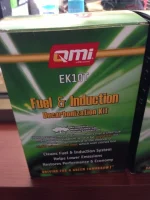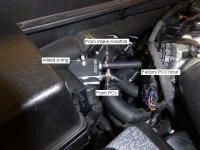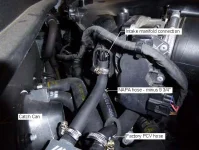This is not news at all. There are many posts on this forum, (and hundreds of Google hits), although the good news is that few Hyundai owners have had the horrific problems experienced by Audi, VW, Ford and, to a lesser extent, BMW.
It's a simple problem: the detergents in fuel can never come into contact with the intake valves because the fuel is injected downstream of the intake system. Therefore, carbon deposits are created that cannot be washed away with fuel system cleaners or detergent fuel. The article mentions BMW service centers blasting intake valves with walnut shells as a recommended service. They like to do that every 50-60 thousand miles. It's one of the few things that works well. Top tier gas is always recommended, but that's because of the requirements of the High Pressure Fuel Pump, not the DI problem.
Installing a
catch can and using full synthetic oil can reduce the problem and might be good for people who want to run high miles in their DI engine-equipped cars.









